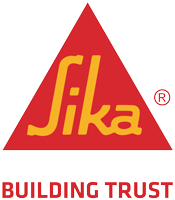Fire tests for building materials in Wall Assemblies
When it comes to wall assemblies, the NFPA 285 fire test receives much attention. The test evaluates fire propagation of wall assemblies that contain combustible components. However, the NFPA 285 is only one of several fire tests that may be applicable on a building project. We’ve compiled a comprehensive list of fire tests that you should know.
ASTM E 84 – Surface Burning Characteristics of Building Materials – a small scale screening test of materials (insulation, air/water resistive barriers, exterior coatings and facings) that determines the flame spread and smoke development indexes of the individual components. Flame spread and smoke developed indexes for materials are set forth in the building codes.
ASTM E 136 – Behavior of Materials in a Vertical Tube Furnace at 750° – this small scale test determines a materials combustion characteristic. Products that meet the requirements of ASTM E 136 are considered to be noncombustible.
ASTM E 1354 – Heat and Visible Smoke Release Rates for Materials and Products Using an Oxygen Consumption Calorimeter – a small scale test to determine a materials ignitability, heat release rates, and heat of combustion. For buildings greater than 40 feet in height, codes typically require wall assemblies with a combustible water resistive barrier to be tested per NFPA 285, except if the water resistive barrier is tested per ASTM E 1354 and meets the code required criteria for heat release and heat of combustion.
ASTM E 119 – Fire Tests of Building Construction and Materials – this test evaluates the fire resistance or what is often referred to as the ‘hourly fire resistive rating’ of the entire wall assembly, which is required by the codes for certain buildings and building types.
NFPA 268 – Standard Test Method for Determining Ignitibility of Exterior Wall Assemblies Using a Radiant Heat Energy Source – this is a test to determine the ignitability characteristics of an exterior wall assembly when subjected to a radiant heat energy source. With certain building types and some exceptions which are set forth in the codes, exterior walls with foam plastic insulation shall not exhibit flaming when tested per NFPA 268.
NFPA 259 – Standard Test Method for Potential Heat of Building Materials – this test is to determine the potential heat of foam plastic insulation material. With certain building types and some exceptions which are set forth in the codes, the foam plastic is generally limited to the same potential heat of the foam plastic used in the NFPA 285 test assembly.
Building products manufacturers conduct extensive testing to ensure their products comply with the necessary tests and make performance results easily accessible for architects and construction professionals. You can learn more about Senergy Wall Systems testing here.

